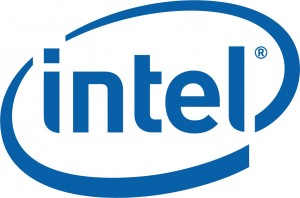At an Intel event in London this week, Telecoms.com sat down with VP and General Manager of Intel’s Communications and Storage Infrastructure Group, Rose Schooler. During the conversation, Schooler outlined Intel’s ecosystem and community for NFV and SDN advancement, Intel Network Builders’ Program (NBP), and the company’s view on the origins of NFV.
October 16, 2014

At an Intel event in London this week, Telecoms.com sat down with VP and General Manager of Intel’s Communications and Storage Infrastructure Group, Rose Schooler. During the conversation, Schooler outlined Intel’s ecosystem and community for NFV and SDN advancement, Intel Network Builders’ Program (NBP), and the company’s view on the origins of NFV.
At the time of writing, the NBP hosts more than 90 members, with all of the usual network infrastructure and software suspects included. That being said, Cisco was conspicuous by its absence, whereas its latest target for acquisition, Tail-f, is actively engaged with the program. Schooler elaborated on this rather paradoxical predicament, and was quick to emphasise there is no underlying tension between the two Silicon Valley giants.
“That’s actually a really interesting question,” she said. “That acquisition is not closed yet, so we still see the two companies as separate entities. We’re very much engaged with Cisco and we’re continuing to talk with them regarding involvement in the program. There’s not been any commitment yet, but the number of initiatives from a technological and a go-to-market perspective continues to increase. Whether they’re formally in the program or just a great collaborator, the purpose has been served.”
With a number of different industry consortia dedicated to advancing NFV and SDN, a natural thought process is to ponder the motivating factors for companies joining Intel’s NBP. Schooler highlighted two areas where the programme benefits its participants, community and industry familiarity, and developing reference architectures.
“I think it’s a couple of different things. Number one, I think you get a community and an ecosystem of software and hardware vendors who probably didn’t know each other before,” she said. “We’re going to continue building out the community aspect of the programme pretty aggressively, including bringing in the input of the operators as the voice of the customer.”
“The other thing is blueprint and reference architectures. Looking at the ETSI use-case on service chaining, we defined the use-case and built a proof of concept with the NBP ecosystem,” she said. “So not only do you know how to build it, but you know who you can buy those building blocks from. Then through programmes like Open Platform for NFV (OPNFV) you have a capability of evaluating the solution too.”
Presumably, Intel’s development of a wider community for NFV acceleration isn’t entirely altruistic. When asked what Intel stands to gain, Schooler responded quite simply. “That’s easy,” she said. “We have 5% market segment share from a revenue perspective in networking. For us, it’s about growth.”
Conversation quickly moved on to Intel’s views on the rapidly developing NFV market, and to the origins of the carrier network virtualisation movement. Schooler was quick to highlight Intel’s position in enabling the “carrier club” which formed around the conception of ETSI’s NFV ISG.
“Let me tell you a story about a conversation we had with BT,” said Schooler. “It was a conversation at Intel Developers’ Forum about 3 years ago, with a gentleman by the name of Don Clarke. Don was sat across the table from me and said ‘hey, I want to try and use these enterprise technologies and data centre infrastructures in the telco environment. I need your help, are you in?’”
“That was really the initial conversation, and at about the same time we were having some conversations with Korea Telecom and China Mobile,” she continued. “At the time we were thinking that KT was a pretty progressive user of technology, very progressive indeed. Then we got a data point from China Mobile, and we thought that China is a pretty dense demographic so you can see how technology like CRAN would be beneficial. But then we had a similar conversation with BT, and then with Verizon, and then with Telefónica. So we worked pretty closely with Don (Clarke) and said that we have this idea of bringing these carriers together in a club, and consolidating those requirements back to the supply chain.”
Intel’s claim to have been highly instrumental in the foundation of NFV predates the development of the first NFV whitepaper and its announcement in October 2012.
“That was when we started to take the ‘carrier club’ idea and formalise the discussion. We looked at a couple of standards bodies to have that conversation with,” Schooler explained. “What we found with ETSI was that a lot of the governance was already in place, so we didn’t have to recreate it. Carriers were already members, so we went to ETSI for those reasons.”
Looking towards the next generation mobile network, Schooler elaborated on how Intel is working with mobile operators to help place workloads more efficiently, nearer the network edge.
“Looking at the role of the base station in the user experience, the opportunity to bring content closer to the user is a pretty valuable experience,” she said. “You’ll get varying opinions on this, but we’re testing it with operators. One of the first pilots we ran was about video optimisation and we saw a 50% improvement in video performance with zero buffering. 50% more traffic served with the same backhaul link capacity. The pervasive theme we’re seeing is that operators see the value in bringing content closer to the user.”
It’s not of huge surprise that a behind-the-scenes party may have helped coordinate what we now know as the NFV movement. But the formation of such an important branch of technology will have involved a number of stakeholders and its possible some of them might remember things differently.
About the Author(s)
You May Also Like








.png?width=300&auto=webp&quality=80&disable=upscale)


_1.jpg?width=300&auto=webp&quality=80&disable=upscale)


.png?width=800&auto=webp&quality=80&disable=upscale)